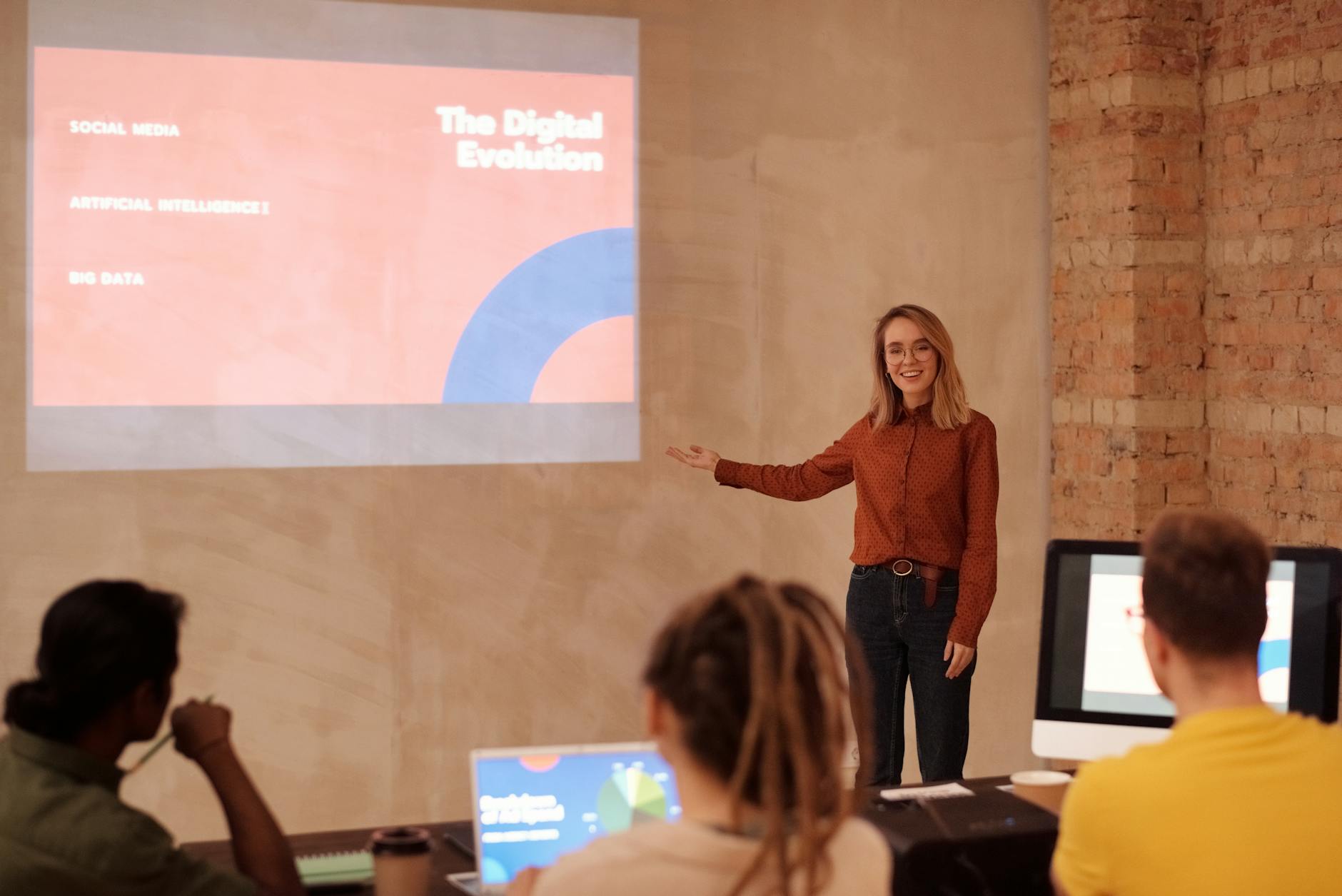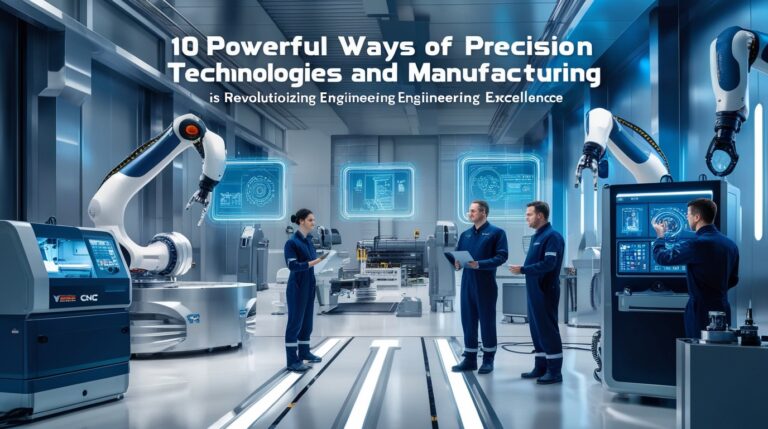Future Tech Trends 2025 Powering Business Success
The 2025 Tech Revolution: Reshaping Businesses with Web, Mobile, AI, Cloud & Modern UI/UX
Estimated reading time: 18-20 minutes
Key Takeaways
- Converging Technologies: 2025 will see the profound convergence of web, mobile, AI, cloud, and modern UI/UX, creating unprecedented opportunities for businesses.
- Performance and Personalization: User experience, driven by speed, personalization, and intuitive design (both web and mobile), will be paramount for success and SEO.
- Automation and Efficiency: AI automation and robust DevOps practices, including serverless architectures and CI/CD pipelines, are critical for cost-efficiency, scalability, and freeing up human teams for strategic work.
- Strategic Digital Transformation: Successful digital transformation requires a holistic approach, empowering small businesses, building future-proof tech stacks, and ensuring accessibility and inclusivity in all designs.
- Partnering for Success: Companies like AITechScope offer specialized support in AI-powered automation and business process optimization to help businesses navigate and thrive in this evolving tech landscape.
Table of Contents
- 1. Navigating the Digital Frontier of 2025: A New Era of Innovation
- 2. The Evolving Landscape of Web Development in 2025
- 3. Mobile App Development in 2025: Cross-Platform Prowess and Immersive Experiences
- 4. Cloud Computing and DevOps: The Engine of Digital Transformation
- 5. AI Automation for Businesses: Intelligent Efficiency and Strategic Growth
- 6. Modern UI/UX Design: Crafting Seamless and Engaging Experiences
- 7. Digital Transformation Strategies: Roadmap for Success
- 8. Partnering for Progress: AITechScope’s Role in Your Digital Journey
- 9. Conclusion: Embracing the Future of Technology
- 10. Frequently Asked Questions (FAQs)
1. Navigating the Digital Frontier of 2025: A New Era of Innovation
The digital landscape is an ever-shifting tapestry, continuously rewoven by threads of innovation. As we step into 2025, the pace of technological advancement is not merely accelerating; it’s undergoing a profound transformation that will fundamentally reshape how businesses operate, how users interact with digital products, and how developers build the future. This isn’t just about incremental improvements; it’s about a holistic evolution where 2025 tech trends converge to create unprecedented opportunities for growth, efficiency, and competitive advantage.
From the dynamic evolution of web development trends and groundbreaking mobile app development 2025 strategies, to the indispensable role of cloud computing and DevOps, the pervasive influence of AI automation for businesses, and the critical importance of modern UI/UX design, every sector is ripe for disruption. This comprehensive guide serves as your 2025 tech playbook, breaking down complex trends into simple, actionable insights.
For business owners, developers, and tech enthusiasts alike, understanding these shifts is not merely beneficial; it’s essential for survival and success. We’ll explore how these technologies can be leveraged to accelerate growth, drastically improve performance, and drive digital transformation strategies that are both ambitious and attainable. AITechScope, a leading provider of virtual assistant services, specializing in AI-powered automation, n8n workflow development, and business process optimization, stands ready to help businesses navigate this exciting future, turning challenges into opportunities through intelligent delegation and automation solutions.
2. The Evolving Landscape of Web Development in 2025
Web development in 2025 is characterized by a relentless pursuit of speed, scalability, and enhanced user experience. The days of static, monolithic websites are long gone, replaced by dynamic, component-driven, and often AI-powered applications that demand cutting-edge architectures and frameworks. The focus is squarely on delivering seamless, personalized, and performant experiences across all devices.
2.1. Next-Generation Frontend: Beyond Traditional Frameworks
The frontend ecosystem continues its rapid evolution, with a strong emphasis on performance and developer experience. Frameworks are maturing, offering more integrated solutions for building complex applications.
2.1.1. Next.js and React Performance: Building Lightning-Fast Experiences
For modern web applications, speed is not a luxury; it’s a necessity. Users expect instantaneous load times, and search engines reward fast sites with higher rankings. This makes Next.js and React performance a paramount concern for any serious software development 2025 project. Next.js, in particular, has emerged as a dominant force, offering server-side rendering (SSR) and static site generation (SSG) out-of-the-box, significantly improving initial page load times compared to purely client-side React applications.
Optimizing React performance involves several key strategies, as detailed in various performance guides. These include:
- Code Splitting: Loading only the necessary code for a given route.
- Memoization: Preventing unnecessary re-renders of components using
React.memo,useMemo, anduseCallback. - Image Optimization: Utilizing modern formats like WebP and AVIF, and implementing lazy loading.
- Efficient State Management: Avoiding excessive state updates and optimizing context API usage.
- Server-Side Rendering (SSR) and Static Site Generation (SSG): Leveraging Next.js features to deliver pre-rendered HTML.
For small businesses, Next.js offers an unparalleled advantage. Building a Next.js small business site can translate into a fast marketing site Next.js provides, often achievable “in one weekend” with proper planning. Its beginner-friendly documentation and opinionated structure make it an excellent choice for a Next.js beginner guide to modern web development. The benefits extend beyond speed; Next.js naturally aligns with SEO optimization practices, which are crucial for attracting organic traffic.
2.1.2. Micro Frontends: Modularity for Scalable Web Applications
As applications grow in complexity, maintaining a single, monolithic frontend codebase becomes a significant challenge. This is where microservices architecture principles extend to the frontend through Micro Frontends. This architectural style breaks down a large frontend application into smaller, independently developed, and deployed pieces.
Micro Frontends can be a game-changer for large organizations with multiple teams working on different parts of an application. They foster autonomy, enable faster development cycles, and reduce the risk of a single point of failure. However, it’s crucial to understand “When They Help and When They Hurt,” as implementing them introduces overhead in terms of tooling, communication, and infrastructure. For smaller teams or simpler applications, the added complexity might outweigh the benefits. Yet, for tech stack for modern businesses aiming for extreme scalability and agility, micro frontends represent a powerful evolution in web development.
2.2. Backend Innovation: Powering Scalable Solutions
The backend landscape in 2025 is dominated by strategies that prioritize scalability, cost-efficiency, and developer agility. Serverless architecture and API-first approaches are at the forefront, decoupling frontend and backend concerns for greater flexibility.
2.2.1. Serverless Architecture: Cost-Efficiency and Elasticity
Serverless architecture is no longer a niche concept; it’s a mainstream choice for building scalable and cost-efficient backends. Platforms like AWS Lambda, Azure Functions, and Google Cloud Functions allow developers to write and deploy code without provisioning or managing servers. This paradigm directly translates to significant cost savings, as you only pay for the compute time consumed by your functions, making it a powerful serverless AWS cost example of efficiency.
For startups, a serverless backend for startups offers immense advantages:
- Reduced Operational Overhead: No server management means more focus on core product development.
- Automatic Scaling: Functions scale automatically with demand, handling traffic spikes effortlessly.
- Pay-per-Execution Billing: Ideal for variable workloads, saving money during low usage periods.
This approach is integral to digital innovation for startups looking to maximize their runway and focus on rapid iteration.
2.2.2. Headless CMS and API-First Approaches
The traditional tightly coupled Content Management System (CMS) is giving way to the headless CMS WordPress model and broader API-first strategies. A headless CMS separates the content management backend (where content is created and stored) from the frontend presentation layer. This allows content to be delivered via APIs to any platform – a website, a mobile app, an IoT device, or even an AI-powered web app.
For web development, this offers unprecedented flexibility, especially when paired with modern frontend frameworks like Next.js. It allows developers to use WordPress for content authors’ familiar interface while building a super-fast, custom frontend experience that isn’t constrained by WordPress’s traditional themes and plugins. This approach helps create WordPress without the bloat, focusing on lightweight plugins that actually help SEO and performance.
2.3. AI-Powered Web Apps: Smart Experiences and Personalization
The integration of artificial intelligence is no longer optional for cutting-edge web applications. AI-powered web apps are becoming the standard, offering intelligent features that enhance user experience, personalize content, and automate tasks.
This includes:
- Personalized Recommendations: Tailoring content, products, or services based on user behavior.
- Intelligent Search: Semantic search capabilities that understand user intent rather than just keywords.
- Automated Content Generation: AI assisting with creating product descriptions, social media posts, or even blog outlines.
- Dynamic Pricing and Offers: AI-driven adjustments based on demand, inventory, and user profiles.
For SaaS product optimization, integrating “3 Low-Effort AI Features That Delight Users” can significantly boost engagement and retention. Simple AI additions like intelligent chatbots (discussed further below), personalized onboarding flows, or smart data insights can transform a product from functional to indispensable.
3. Mobile App Development in 2025: Cross-Platform Prowess and Immersive Experiences
Mobile apps remain at the core of digital interaction. Mobile app development 2025 is characterized by a drive for efficiency, performance, and highly intuitive user experiences, with cross-platform solutions gaining significant ground.
3.1. The Cross-Platform Revolution: Flutter vs. React Native
The debate between native and cross-platform mobile development continues, but cross-platform frameworks have matured to a point where they are often the preferred choice for their speed, cost-effectiveness, and ability to reach a wider audience with a single codebase.
3.1.1. Flutter vs React Native in 2025: Making the Right Choice
The choice between Flutter vs React Native in 2025 is a critical one for many businesses, especially startups. Both frameworks offer compelling advantages for building high-quality, performant cross-platform apps.
- React Native: Backed by Facebook, uses JavaScript/TypeScript. Leverages native components for a native look and feel. Benefits from a large, established JavaScript developer community.
- Flutter: Developed by Google, uses Dart. Renders its own UI components, offering pixel-perfect control and consistent UI across platforms. Known for its hot-reload feature and excellent performance.
For which mobile framework for startups, the decision often hinges on existing team expertise, performance requirements, and desired UI consistency. React Native offers a familiar environment for web developers, while Flutter provides a powerful, often faster, rendering engine and a rapidly growing ecosystem, making it easy to “Build a Simple Cross-Platform App with Flutter: From Idea to Play Store.” Both are excellent choices for digital innovation for startups aiming for efficient market entry.
3.2. UI/UX Trends for Mobile: Intuition and Accessibility
Mobile app UI trends in 2025 prioritize intuition, delight, and inclusivity. Users expect apps to be effortlessly navigable, visually appealing, and tailored to their needs.
- Minimalism and Clean Interfaces: Reducing clutter to enhance focus on core content and actions.
- Dark Mode and Theming: Offering personalized visual experiences that reduce eye strain.
- Gesture-Driven Interfaces: Moving beyond traditional taps to more fluid and natural interactions.
- Micro-interactions and Haptic Feedback: Subtle animations and vibrations that provide satisfying feedback and enhance usability.
- Personalization: Dynamically adapting UI elements and content based on user preferences and context.
Crucially, modern UI/UX design also places a strong emphasis on accessibility. Designing for everyone means considering users with disabilities, ensuring responsive UI design adapts not just to screen size but also to accessibility features like screen readers and alternative input methods. Practical guides like “Designing Accessible Buttons: A Non-Designer’s Guide (Figma Tips)” highlight that accessibility is not an afterthought but a fundamental aspect of good design.
3.3. AI Integration in Mobile: Intelligent Features and Personalization
Just as in web development, AI is deeply embedding itself into mobile applications. This goes beyond simple recommendations to truly intelligent features:
- Contextual Awareness: Apps understanding user location, time of day, and activity to offer proactive assistance.
- Voice and Conversational UIs: Enhanced voice assistants and integrated chatbots providing hands-free interaction.
- Personalized Content Streams: Curating news feeds, shopping suggestions, or entertainment based on deep learning of user habits.
- Predictive Features: From suggesting the next word in a message to anticipating user needs before they explicitly ask.
These AI-powered mobile apps offer a level of convenience and personalization that was once futuristic, making them a key part of software development 2025.
4. Cloud Computing and DevOps: The Engine of Digital Transformation
Cloud computing and DevOps are no longer emerging technologies; they are the bedrock upon which modern digital transformation strategies are built. They provide the agility, scalability, and resilience necessary for businesses to thrive in the fast-paced 2025 landscape.
4.1. Cloud Migration Strategies: Modernizing Infrastructure
The move to the cloud continues unabated, driven by the desire for cost savings, flexibility, and access to advanced services. However, cloud migration strategy is not a one-size-fits-all endeavor, especially for established businesses with legacy systems.
The challenge of “How to Move Your Legacy App to the Cloud Without Breaking It” highlights the need for careful planning, phased approaches, and often, re-architecting applications to be cloud-native. Strategies include:
- Rehosting (Lift and Shift): Moving applications as-is to the cloud. Simplest but may not fully leverage cloud benefits.
- Refactoring/Re-platforming: Making minor changes to optimize for the cloud without rewriting core code.
- Re-architecting: Significantly modifying or rewriting applications to fully utilize cloud capabilities, often moving towards microservices architecture and serverless functions.
- Retiring/Replacing: Eliminating redundant applications or replacing them with SaaS solutions.
Successful enterprise digital adoption relies heavily on a robust cloud foundation. For digital innovation for startups, starting with a cloud-native approach from day one provides inherent scalability and flexibility.
4.2. DevOps Best Practices and CI/CD Automation
Cloud computing and DevOps are intrinsically linked. DevOps represents a cultural and technical shift that emphasizes collaboration, communication, and automation throughout the software development lifecycle. DevOps best practices are essential for accelerating delivery, improving software quality, and fostering a culture of continuous improvement.
4.2.1. CI/CD for Small Teams: Streamlining Deployments
Continuous Integration/Continuous Deployment (CI/CD) pipelines are non-negotiable for modern software development 2025. For CI CD small team setups, automation tools like GitHub Actions deploy tutorial offer powerful, yet accessible, solutions. These tools allow small teams to:
- Automate Testing: Running unit, integration, and end-to-end tests automatically with every code commit.
- Streamline Builds: Automatically compiling code and building deployable artifacts.
- Orchestrate Deployments: Deploying applications to various environments (staging, production) with minimal manual intervention.
This “Automated Deployments Without the Headache” approach saves valuable developer time, reduces human error, and ensures consistent releases, allowing small teams to compete effectively with larger organizations.
4.2.2. Microservices Architecture: Agility and Scalability
Microservices architecture continues to gain traction as a fundamental pattern for building scalable, resilient, and independently deployable applications. Instead of a single, monolithic application, microservices break down an application into a collection of small, loosely coupled services, each responsible for a specific business capability.
Benefits include:
- Independent Development and Deployment: Teams can work on and deploy services independently, increasing agility.
- Technology Heterogeneity: Different services can be built using different programming languages and technologies, optimizing for specific needs.
- Improved Fault Isolation: A failure in one service is less likely to bring down the entire application.
- Easier Scalability: Individual services can be scaled independently based on demand.
While powerful, microservices introduce complexity in terms of distributed systems, monitoring, and inter-service communication. Careful consideration and adherence to DevOps best practices are crucial for successful implementation.
5. AI Automation for Businesses: Intelligent Efficiency and Strategic Growth
Artificial Intelligence is no longer a futuristic concept; it is an indispensable tool for AI automation for businesses in 2025. Its application ranges from streamlining routine tasks to providing deep insights that drive strategic decisions.
5.1. Beyond Hype: Practical AI Automation for Businesses
The true power of AI lies in its practical application to solve real-world business problems, not just in its theoretical capabilities. Focusing on actionable AI automation for businesses can unlock significant value.
5.1.1. Chatbot Automation: Transforming Customer Service and Operations
Chatbot automation has moved beyond simple FAQs to become sophisticated virtual assistants capable of handling complex queries, providing personalized support, and even completing transactions. AI chatbots for customer service are transforming how businesses interact with their clients, offering 24/7 availability and instant responses.
For small businesses, chatbots represent a significant opportunity to save time and enhance customer satisfaction without incurring prohibitive costs. “How Small Businesses Use Chatbots to Save Time: Real Workflows That Work” illustrates practical applications:
- Automated Lead Qualification: Chatbots can ask qualifying questions and route hot leads to sales.
- Booking Appointments: Facilitating scheduling without human intervention.
- Providing Instant Support: Answering common questions, reducing the load on human support agents.
- Personalized Product Recommendations: Guiding customers through purchasing decisions.
These automated interactions improve efficiency, allowing human teams to focus on more complex, high-value tasks.
5.1.2. Workflow Automation Tools and Intelligent Delegation
The core of AI automation for businesses lies in automating repetitive, rule-based tasks across various business processes. Workflow automation tools are becoming smarter, leveraging AI to handle exceptions, make predictions, and even learn from past interactions.
This is where AITechScope shines. Specializing in AI-powered automation, n8n workflow development, and business process optimization, AITechScope helps businesses leverage cutting-edge AI tools and technologies to scale operations, reduce costs, and improve efficiency through intelligent delegation and automation solutions. By mapping existing workflows and identifying automation opportunities, AITechScope empowers companies to “Automate Repetitive Tasks with No-Code Tools + AI (Save 5–10 Hours/Week),” freeing up employees for more strategic work. This covers everything from data entry and reporting to email management and customer onboarding.
5.2. Addressing the Challenges: When AI Falls Short
While the potential of AI is immense, it’s crucial to acknowledge its limitations and challenges. As the research article “AI Tools: AI Fails… You can’t always get what you want!” by Jeff Foster suggests, AI is not infallible.
- Data Dependency: AI models are only as good as the data they are trained on. Biased or insufficient data can lead to inaccurate or unfair outcomes.
- Lack of Common Sense: AI still struggles with general knowledge and common sense reasoning that humans take for granted.
- Ethical Concerns: Issues of privacy, algorithmic bias, accountability, and job displacement require careful consideration.
- Over-reliance and Misunderstanding: Businesses can sometimes over-rely on AI without understanding its operational limits, leading to unexpected failures or suboptimal results.
- Cost and Complexity: Implementing advanced AI solutions can be expensive and require specialized expertise.
A balanced approach involves understanding where AI excels and where human oversight, critical thinking, and emotional intelligence remain irreplaceable. The goal is augmentation, not complete replacement, creating a synergistic environment between human intelligence and artificial intelligence.
6. Modern UI/UX Design: Crafting Seamless and Engaging Experiences
In a world saturated with digital products, exceptional modern UI/UX design is the ultimate differentiator. It’s about more than just aesthetics; it’s about crafting experiences that are intuitive, efficient, accessible, and emotionally resonant.
6.1. User-Centric Design Principles for 2025
The core tenet of user-centric design remains paramount: putting the user at the heart of every design decision. In 2025, this translates into:
- Empathy-Driven Design: Deeply understanding user needs, behaviors, and pain points through extensive research.
- Predictive Interfaces: Designs that anticipate user actions and offer proactive assistance, often powered by AI.
- Emotional Design: Creating experiences that evoke positive emotions, leading to greater user loyalty and engagement.
- Contextual Awareness: UI/UX that adapts dynamically to the user’s environment, device, and even emotional state.
6.2. Accessibility and Inclusivity: Designing for Everyone
A truly modern UI/UX design is inherently inclusive. Designing for accessibility is not a niche requirement but a fundamental ethical and business imperative. This means ensuring that digital products are usable by people with the widest range of abilities, including those with visual, auditory, motor, or cognitive impairments.
Key considerations include:
- Color Contrast and Typography: Ensuring readability for all users.
- Keyboard Navigation: Making sure all features are accessible without a mouse.
- Screen Reader Compatibility: Providing descriptive alternative text for images and clear semantic structures.
- Clear and Consistent Navigation: Reducing cognitive load.
- Responsive UI Design: Not just adapting to different screen sizes, but also to different input methods and user preferences.
“Designing Accessible Buttons: A Non-Designer’s Guide (Figma Tips)” is a reminder that even small design elements can have a profound impact on accessibility, and that tools are available to help integrate these principles effectively.
6.3. Personalization and Adaptive Interfaces
Leveraging data and AI, interfaces are becoming increasingly personalized and adaptive. This goes beyond showing the user’s name; it involves:
- Dynamic Content: Tailoring news feeds, product recommendations, or learning paths based on individual preferences and past behavior.
- Adaptive Layouts: Interfaces that subtly rearrange or highlight elements based on user’s current context or typical usage patterns.
- Proactive Assistance: AI-driven nudges or suggestions that anticipate user needs.
These UI/UX design trends aim to create a feeling of bespoke service, making each user’s digital experience uniquely relevant and efficient.
7. Digital Transformation Strategies: Roadmap for Success
True digital transformation strategies involve more than just adopting new technologies; they require a holistic rethinking of business processes, organizational culture, and customer engagement. For businesses of all sizes, a clear roadmap is essential.
7.1. Empowering Small Businesses with Tech Innovation
The digital revolution isn’t just for large enterprises. Tech innovation for small businesses and digital innovation for startups can level the playing field, enabling them to compete effectively. Many of the trends discussed, from serverless backend for startups to CI CD small team practices, are specifically geared towards providing agile, cost-effective solutions for smaller players.
Digital Transformation on a Budget: 7 Steps Small Companies Can Start Today provides a pragmatic approach:
- Assess Your Current Digital Maturity: Understand where you stand.
- Identify Key Pain Points: Focus on areas where tech can have the biggest impact (e.g., customer service, marketing, operations).
- Prioritize Small, High-Impact Projects: Start with achievable wins (e.g., chatbot automation, a Next.js small business site).
- Embrace Cloud-Based Solutions: Leverage SaaS and serverless for lower upfront costs.
- Automate Repetitive Tasks: Free up staff time with workflow automation tools.
- Invest in Digital Skills: Upskill your team or seek external expertise.
- Foster a Culture of Experimentation: Be open to trying new technologies.
7.2. Building a Future-Proof Tech Stack
Choosing the right tech stack for modern businesses is crucial for long-term success. A future-proof stack is not about picking the trendiest tools but about selecting robust, scalable, and maintainable technologies that align with business goals.
- Frontend: Next.js for fast marketing site Next.js, coupled with React for dynamic user interfaces.
- Mobile: Flutter vs React Native depending on team expertise and specific project needs, both offering excellent cross-platform app capabilities.
- Backend: Serverless architecture (e.g., AWS Lambda) for highly scalable and cost-efficient operations, potentially alongside microservices architecture for complex systems.
- CMS: Headless CMS WordPress for flexible content management.
- DevOps: CI/CD automation using tools like GitHub Actions for CI CD small team deployments.
- AI/Automation: Integration of AI automation for businesses through chatbots, workflow automation tools, and intelligent APIs.
7.3. Performance Optimization: The Key to User Satisfaction and SEO
In the 2025 digital ecosystem, performance is non-negotiable. It directly impacts user satisfaction, conversion rates, and SEO rankings. Performance optimization techniques should be embedded throughout the development lifecycle.
- Web Performance: Beyond Next.js and React optimizations, this includes efficient image loading, asset compression, minimizing render-blocking resources, and leveraging Content Delivery Networks (CDNs). A Real-World Case Study: How We Cut Page Load by 60% for a Client demonstrates the tangible benefits of focused performance work.
- Mobile App Performance: Optimizing app startup times, reducing memory footprint, efficient data fetching, and smooth animations.
- Backend Performance: Efficient database queries, caching strategies, and well-designed APIs.
Even for content-heavy platforms, WordPress without the bloat: lightweight plugins that actually help SEO can make a significant difference. Every millisecond counts in the user experience and the race for search engine visibility.
8. Partnering for Progress: AITechScope’s Role in Your Digital Journey
As businesses navigate the complex and exciting landscape of 2025 tech trends, the need for expert guidance and practical implementation support is paramount. This is precisely where AITechScope adds exceptional value.
AITechScope is at the forefront of this digital transformation, offering specialized virtual assistant services that empower businesses to harness the full potential of AI-powered automation, n8n workflow development, and comprehensive business process optimization. We understand that implementing advanced technologies can be daunting, especially for teams juggling multiple priorities.
Our expertise bridges the gap between ambitious digital transformation strategies and their seamless execution. Whether you need to deploy sophisticated AI chatbots for customer service, streamline internal operations with intelligent workflow automation tools, or optimize your existing processes through smart delegation, AITechScope provides tailored solutions. We help you scale operations, reduce costs, and improve efficiency by intelligently integrating these cutting-edge tools into your unique business environment, ensuring you stay ahead in the 2025 tech revolution.
9. Conclusion: Embracing the Future of Technology
The year 2025 heralds a digital era defined by unprecedented technological convergence and rapid innovation. From the intricate optimizations in web development trends like Next.js and React performance to the strategic choices in mobile app development 2025 between Flutter vs React Native, and from the robust backbone of cloud computing and DevOps to the transformative power of AI automation for businesses and the immersive potential of modern UI/UX design, the opportunities for growth and efficiency are boundless.
Embracing these 2025 tech trends is no longer an option but a strategic imperative. Businesses that proactively adopt digital transformation strategies, invest in a future-proof tech stack, and prioritize performance optimization techniques will be the ones to thrive. Whether it’s a small business looking to leverage chatbot automation or an enterprise seeking CI/CD automation and microservices architecture, the path forward is clear: innovation, agility, and user-centricity.
The journey through this evolving digital landscape can be complex, but with the right insights and a strategic partner like AITechScope, companies can confidently navigate the challenges and harness the incredible power of technology to accelerate growth, improve performance, and truly transform their operations. The future is here, and it’s built on intelligent, automated, and seamlessly integrated digital experiences.
10. Frequently Asked Questions (FAQs)
Q1: What are the most significant 2025 tech trends impacting small businesses?
The most significant trends for small businesses include the adoption of AI automation for businesses (especially chatbot automation and workflow automation tools), the shift towards serverless architecture for cost-efficient backends, and leveraging powerful frontend frameworks like Next.js for small business sites to create fast marketing sites Next.js provides. Digital transformation on a budget is key.
Q2: How can Next.js and React performance improve my website’s SEO?
Next.js and React performance significantly boost SEO through faster page load times, which search engines prioritize. Features like server-side rendering (SSR), static site generation (SSG), and automatic code splitting inherent in Next.js contribute to excellent Core Web Vitals, enhancing user experience and search engine rankings for your web development trends aligned site.
Q3: Flutter vs React Native 2025: Which mobile framework is better for a startup?
For startups, the choice between Flutter vs React Native in 2025 often depends on existing team expertise and specific project needs. React Native (JavaScript/TypeScript) might suit teams with web development backgrounds, while Flutter (Dart) offers excellent performance and pixel-perfect UI control, making it great for digital innovation for startups focused on consistent visual branding and rapid development. Both are strong contenders for which mobile framework for startups.
Q4: What are the benefits of serverless architecture for cost-efficiency?
Serverless architecture offers unparalleled cost-efficiency by eliminating server management overhead and adopting a pay-per-execution model. This means you only pay for the actual compute time your code runs, drastically reducing costs during idle periods. This makes it an excellent serverless AWS cost example and a highly attractive serverless backend for startups.
Q5: How does AI automation for businesses translate into practical benefits?
AI automation for businesses translates into practical benefits such as reduced operational costs (e.g., chatbot automation handles customer queries), increased efficiency (workflow automation tools streamline repetitive tasks), improved data insights, and enhanced customer experiences through personalization. Companies like AITechScope specialize in n8n workflow development and business process optimization to implement these solutions.
Q6: What role does modern UI/UX design play in enterprise digital adoption?
Modern UI/UX design is critical for enterprise digital adoption because intuitive, accessible, and engaging interfaces encourage employees to use new digital tools and systems. Poor UI/UX can lead to resistance, low productivity, and failed adoption, even with powerful underlying technology. Responsive UI design and user-centric principles are essential for successful digital transformation strategies.
Q7: How can a CI CD small team effectively implement GitHub Actions deploy tutorial?
A CI CD small team can effectively implement GitHub Actions deploy tutorial by starting with simple automation for testing and building, then gradually extending it to automated deployments. GitHub Actions integrates directly with your repository, making it easy to define workflows that trigger on code pushes, enabling automated deployments without the headache and adhering to DevOps best practices.
Q8: What are the challenges to consider when implementing AI automation?
While powerful, AI automation faces challenges such as the need for high-quality, unbiased data, ethical considerations around privacy and decision-making, the complexity of integration, and the potential for over-reliance leading to unexpected failures when AI “fails.” A balanced approach with human oversight is crucial.






